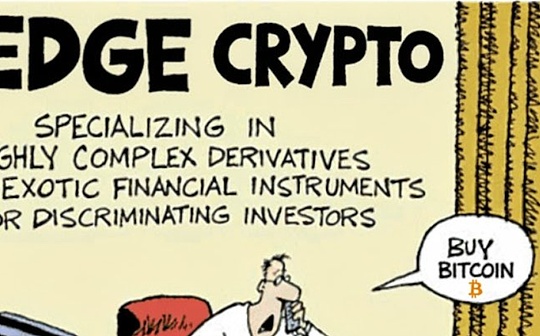
Recently, a research paper from Columbia University has plunged the popular “Prediction Markets” into controversy.
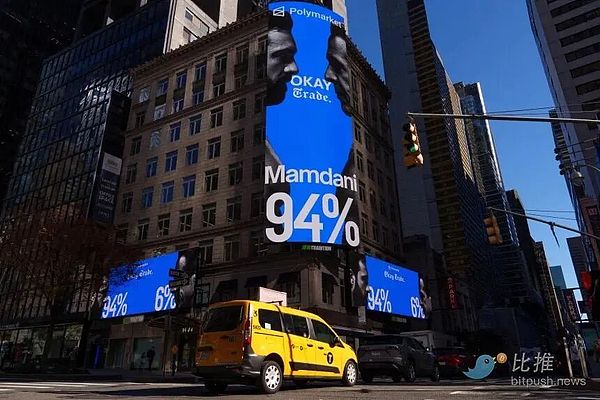
The author of the paper analyzes the blockchain platformPolymarketBased on the two-year historical data, it was found that about 25% of the trading volume may belong to wash trading – that is, the same entity reverses transactions between its own accounts to create false activity.During certain hot-event weeks, such as the U.S. election or sports finals, this percentage even spikes to 60%.
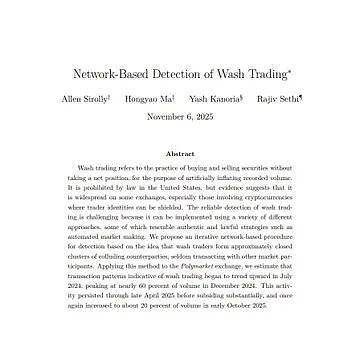
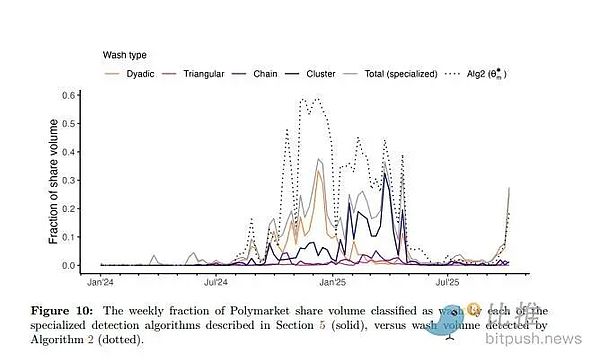
Although the research has not been formally peer-reviewed, it is enough to peel back a corner of the frenzy surrounding prediction markets.Because in the past six months, this track has become almost“visible to naked eye“:Regulatory relaxation, giant support, capital surge, and political intensification——Prediction markets are becoming2025The most watched of the year“New financial species“.
From “marginal gambling” to “new financial species”
The gameplay of the prediction market is not complicated: you can bet on “whether Trump will win the election”, “whether the Federal Reserve will cut interest rates”, “which country the next Nobel Prize winner will be” and other events. The platform forms a “market probability” based on the prices of both parties to the transaction, which is regarded as a manifestation of “group wisdom”.
In 2025, this method of “voting with money” will usher in three opportunities for explosion:
Deregulation
In May this year, the U.S. Commodity Futures Trading Commission (CFTC) withdrew its lawsuit against Kalshi and officially recognized that prediction contracts can be legally traded “under a specific framework.”In September, the CFTC issued a “No-Action Letter” to Polymarket, allowing it to reopen the U.S. market.
This means that the prediction market has moved from a “gray area” to “regulatory visibility”, clearing the biggest obstacle for capital intervention.
Capital + Political Betting
Immediately afterwards, funds poured in:
In August, Polymarket received investment from 1789 Capital, a company owned by Trump’s eldest son, Donald Trump Jr.;

Then, after New York Stock Exchange parent company ICE raised Polymarket’s valuation to $8 billion with a $2 billion investment in September, and rival Kalshi’s valuation reached $5 billion in October with an investment led by a16z and Sequoia Capital, market enthusiasm is still rising sharply.
According to the latest news from Bloomberg, Polymarket is seeking a new round of financing at a higher valuation of US$12 billion to US$15 billion, and Kalshi’s valuation is believed to have exceeded the US$10 billion mark.
Behind this capital surge, the deep involvement of political forces cannot be ignored.
The “market-friendly” regulatory atmosphere created by the Trump administration after taking office paved the way for the explosion of prediction markets.CFTCThe change in attitude and ICE’s huge investment have been interpreted by the market as clear policy signals.
What is even more noteworthy is the personal involvement of the Trump family: Donald Trump Jr. not only invested in Polymarket through 1789 Capital, but also served asKalshiadvisory position;

ICE CEO Jeff Sprecher — who is also the husband of former U.S. Small Business Administration chief Kelly Loeffler — personally led the investment in Polymarket;
Trump’s social platform, Truth Social, also announced that it will launch its own encryption prediction platform “Truth Predict”.
The multiple combined forces of capital, policy and family influence are pushing the prediction market from fringe experiments to the mainstream financial stage.
Giants boost mainstreaming
In October, Google announced that it would integrate real-time prediction data from Polymarket and Kalshi in Google Finance search results. For example, when users search for “who is the president in 2028” or “probability of a Federal Reserve interest rate cut”, a real-time data chart of the prediction market will appear below the results.

This means that for the first time, the prediction market is “embedded” into the world’s largest information portal and becomes part of the public information flow.
Google did not disclose the specific cooperation model with the two companies, but for the market, this action can be called a “mainstream milestone”: the prediction market has changed from “a betting tool for currency players” to a data product visible to ordinary users and quoted by the media.
The results are obvious: Polymarket’s transaction volume hit a record high in October, with a single-month transaction volume exceeding $3 billion, and the number of users increased by 93.7% compared to September.
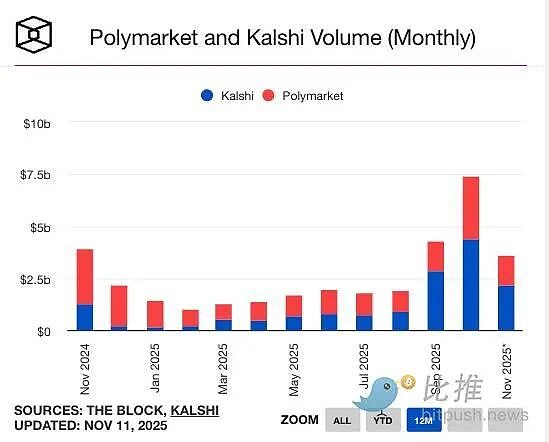
How serious is the “fake transaction” that Columbia questioned?
Back to the research data of the Columbia paper:About a quarter of Polymarket’s transactions from 2024 to 2025 had suspicious patterns: frequent inversions between accounts, extremely short transaction intervals, and almost no position settlement.These characteristics are very similar to the “wash volume” of the NFT market in the past.
The author of the report speculates that there are three main motivations for wash trading in prediction markets:① Compete for future token airdrops or incentive points;② Attract new users to create market popularity;③ Individual market makers stabilize the price range through “fake transactions”.
In other words, someone may repeatedly place “fake orders” in the market in order to boost activity, grab points, and obtain future token rewards.This is not unfamiliar in the field of encryption: from NFT to DeFi, almost every round of innovation is accompanied by the behavior of “data brushing”, but even so, the “moisture” of the prediction market is not the highest in the industry.For comparison:
The early “fake volume” of unregulated Bitcoin exchanges was as high as more than 70% (via Bitwise2019report).

In the NFT market, the proportion of washing trading during the market boom is also between 20% and 50%.
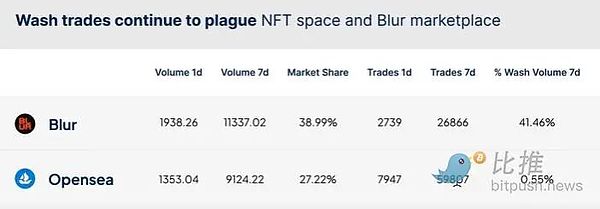
By comparison, Polymarket’s average of 25% is “moderately high.”Coupled with Kalshi’s stronger compliance and strict KYC, the “authenticity” of the entire industry has actually far exceeded that of the early currency circle. Therefore, from an industry perspective, the “water injection” of the prediction market is not a catastrophic problem.
In addition, there are different voices in the industry regarding the conclusions of the Columbia study.
Former AWS engineer yassinelanda.eth offered several counterarguments after reviewing the paper.
He believes that the study has methodological limitations – its conclusions are based on a single on-chain data model, while platforms like Polymarket actually have more sophisticated signaling systems to identify real users and distribute rewards fairly.In addition, the conclusions of the study are very sensitive to the parameters set during analysis, and the severity of the problems they reveal may not be stable.
He further pointed out a key feature of prediction markets: in this field,Valuable signals are far more important than raw trading volume.A simple “left hand, right hand” brush volume cycle cannot produce real profits (PNL).Today, advanced on-chain monitoring and recommendation systems have been able to effectively distinguish informed real transaction flows from market noise from market makers, robots, and self-transactions, and reduce the weight of the latter in recommendations and rewards.
In his view, the core criterion for judging a prediction market should not be the superficial data of “total trading volume” that is easily watered down, but should be:
-
Prediction accuracy: Market results are not accurate.
-
Calibration: Whether the predicted probability matches the actual frequency of occurrence.
-
Bid-ask spread and market depth: Is the market liquidity good and transaction costs high?
-
Slippage during news events: When there is new news, can the price react quickly and smoothly instead of fluctuating violently?
These indicators of market quality and information efficiency are the real core of measuring the value of the forecast market.
The resurgence of gambling: When “betting” becomes the mood of the times
As Lydia Grant, a sociologist at the University of Chicago, observed: “The prediction market continues the American belief system in a sense—it allows people to still gain an illusory sense of control through the action of ‘betting’ amid huge uncertainty.”
This sentence accurately captures the current social pulse of the United States.Faced with the reality of high inflation, political divisions, and class solidification, a “gambler’s mentality” is quietly becoming a common emotional outlet. From sports betting to cryptocurrency to today’s prediction markets, more and more Americans are beginning to leave their fate to probability and release their anxiety among the odds.
And when Wall Street giants also joined in, this trend has received double certification from capital and institutions.The huge investment from institutions such as ICE shows that the mainstream financial community is viewing prediction markets as the next generation of “event-driven” risk pricing infrastructure, rather than just a fringe gambling game.
As Rachel Lin, CEO of SynFutures, points out: “The true value of prediction markets is in quantifying things that traditional finance cannot price, such as policy decisions, technological breakthroughs and geopolitical risks.”
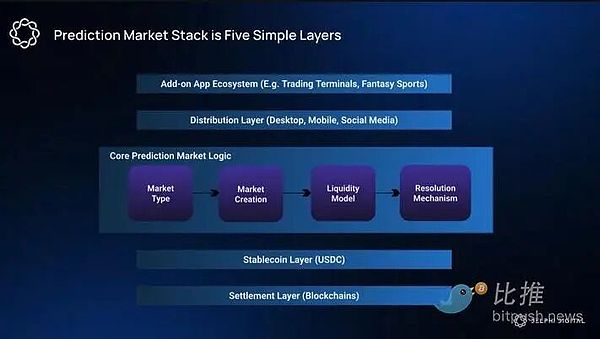
At the same time, Polymarket’s launch of POLY tokens and other actions have injected new fuel into ecological development.Delphi Digital, a research institution, believes that future prediction “terminals” that integrate multi-market data and AI analysis are likely to open a new trading track similar to the meme currency craze.
Of course, challenges remain.U.S. regulatory agencies are still debating the definition of “derivatives” or “gambling.” This lingering policy cloud is still the last hurdle for prediction markets to become fully mainstream.
However, the convergence of capital, technology and social sentiment is irreversible.People thought they were predicting the future, but they didn’t realize that this craze for nationwide betting has itself become the most realistic portrayal of this era.






